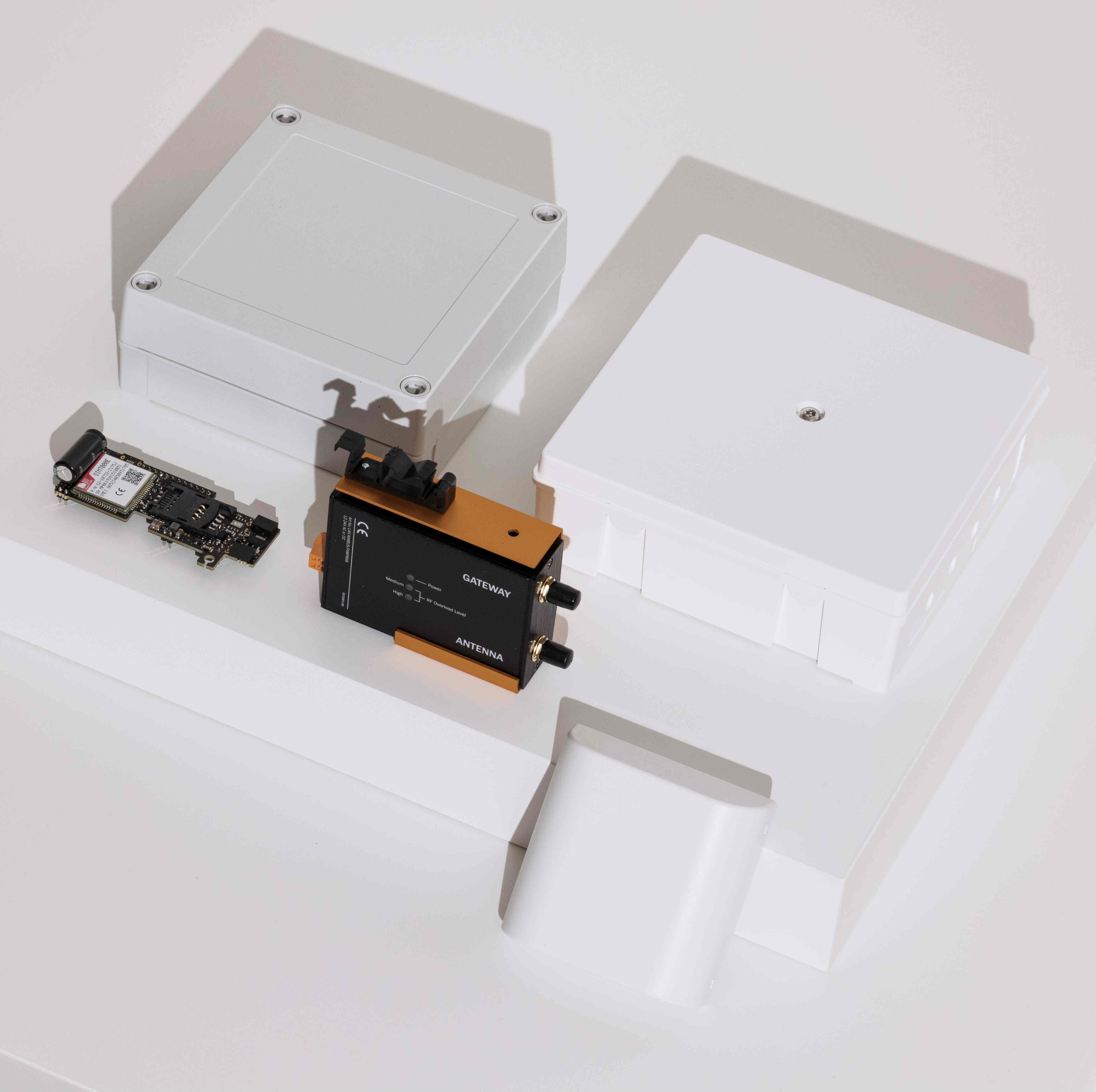Open Metering System (OMS)
Going forward, Open Metering System (OMS) is a main fundament on the market. OMS is an open, vendor independent standard for meter communication based on the Wireless M-Bus protocol. OMS is becoming the standard in more and more countries, which is understandable. With its high level of encrypted safety and operability with different manufacturers, OMS and wM-Bus makes the natural choice.
OMS compatibility with international KNX-standards for building technology
KNX installations can obtain added value from the OMS meters without a great deal of effort as they likewise use S-mode for wireless communication in accordance with EN13757-4.
The widely used KNX standard (ISO/IEC 14543-3 = EN 50090) is therefore fully compatible with the OMS standard. An interface is available for data visualization (display of consumption), as well as integration of the building automation itself for the end-customer. Lastly, future services like load management or tariff are also available to use in the interface.
Since OMS is not a proprietary solution of a single manufacturer, but rather an open communication standard based on European norms, it is optimal to use in a system with congeneric products that access consumption data. This can for example be intelligent homes or buildings.
Advantages with OMS
There are many advantages with OMS, including:
- A future proof standard – The Open Metering System (OMS) is a proven and widely supported standard based on European norms.
- It is interoperable and compatible.
- Freedom to choose suppliers – it is easy to combine OMS meters and sensors from different manufacturers thanks to its openness.
- Reliability for the long-term – the investment in meters and sensors preserves its value long-term.
- Direct communication – with the specially designed meters it is possible to; read out the consumption, localize faulty meters or leakages, control the meters, discover disconnection of meters etc.
- You can reduce energy consumption and improve integration of renewable energy with OMS meters, since they enable the introduction of Smart Grids.
The OMS Specifications: A Comprehensive Overview
The OMS specification defines a Multi Utility Communication (MUC) device, functioning as a smart data concentrator, such as a gateway, between the automated meter management (AMM) backend system and meters, sensors, and actuators. This specification is accessible to the public and can be implemented without patent violations by all interested entities.
The communication between meters/sensors and the backend system is categorized into primary, secondary, and tertiary communication.
Primary Communication
The primary communication occurs between meters/sensors and the MUC. Substantial efforts have been dedicated to standardizing this segment to support all media, along with actuators and displays.
Secondary Communication
Secondary communication extends the primary communication through repeaters or a multi-hop routing protocol. Proprietary solutions are allowed for secondary communication, as a unified network protocol has not yet been specified. Nevertheless, a straightforward unidirectional repeater as a range extender is defined within the primary communication.
Tertiary Communication
Tertiary communication connects the MUC with the AMM backend system.
Structure of the OMS Specification
The OMS specification is divided in three volumes, each defining different parts of the system:
- Volume 1: General Part
- Volume 2: Primary Communication
- Volume 3: Tertiary Communication and MUC
OMS Specification Communication Standard
The new specification builds on established norms and standards where it is possible. Tertiary communication is based on TCP/IP, while primary communication relies on the M-Bus standard (wired or wireless), EN 13757. This ensures the use of readily available equipment, since it can be utilized or modified under the new specification.
OMS Specification Privacy and Data Integrity
Security considerations are essential in OMS to secure legal and social acceptance for smart meters and sensors. Privacy is safeguarded through robust data encryption. The AES 128 encryption standard has been chosen for the Wireless M-Bus link, ensuring consumer privacy by preventing unauthorized meter and sensor data reading, and securing data integrity for the utility company, thereby preventing energy theft.
By maintaining this structure, the OMS specification provides a robust framework for secure and efficient utility communication, facilitating seamless integration and operation within smart metering systems.
Ref: OMS group
FAQ
What is Open Metering System (OMS)?
The Open Metering System (OMS) is the only system definition across Europe which integrates all media (electricity, gas, heat and water incl. submetering) into one system. It was developed by the industry to guarantee a future-proof communication standard and interoperability between all meter products.
Who is the OMS group?
The OMS-Group is a non-profit association that consists of companies that use the Wireless M-Bus technology. In order to guarantee a future-proof communication standard and complete interoperability between all sensor and meter products, the group has defined a set of specifications, which is the OMS standard.
What is OMS4mioty?
With OMS4mioty, the existing OMS protocol and data structures can be used with the ultra-long-range protocol mioty. With this approach the mioty headers etc. can be extended with an additional OMS header (with serial number), which means that the data will be formatted as normal OMS/Wm-Bus data.
The benefit of this is approach is that existing:
- mioty gateways will be able to receive the data.
- Parsers for OMS and wM-Bus will be able to parse the data since the data is the same as for OMS4 and OMS3.
To ease the transition from OMS4 to OMS4mioty Lansen have released a wireless bridge that easily converts incoming wM-bus messages and transmits them as OMS4mioty telegrams. More information about the protocol OMS4mioty can be found in the Technical report 08 OMS over mioty at https://oms-group.org/
What is OMS5?
OMS group have now introduced the next generation of OMS: OMS version 5. This version can either use the mioty technology to send data, which is called telegram splitting, or it can use the burst mode transmission. Here, the data is sent in one chunk as in Wm-Bus. The two variants in the OMS5 specification are called the following:
- telegram splitting mode or,
- the burst mode.
A new header has been introduced in OMS5 that is even more similar to the wireless M-Bus header, which makes it even easier for parsers to parse the data compared to the OMS4mioty structure. The OMS5 specification was released in 2024. We will update this document with additional information as time goes by.
To see the complete OMS5 specification, visit OMS website here!
Discover our range of OMS Wireless M-Bus devices

Wireless M-Bus sensors






